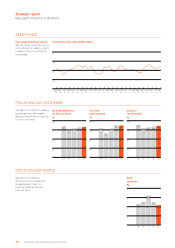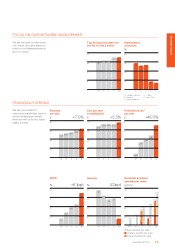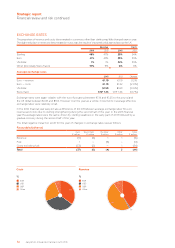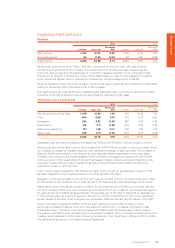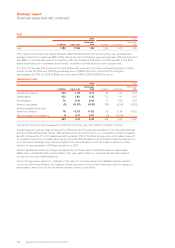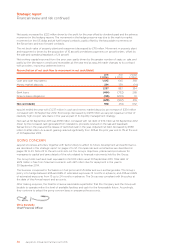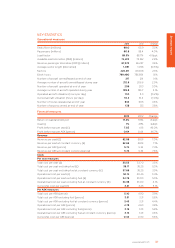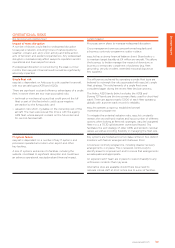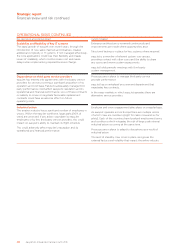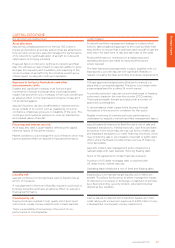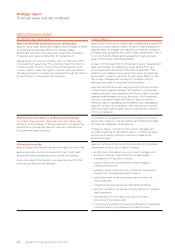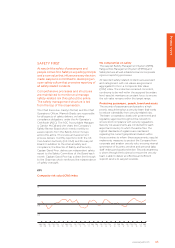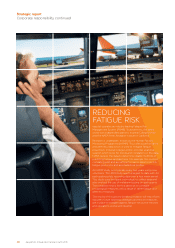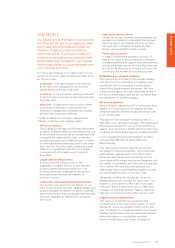EasyJet 2013 Annual Report Download - page 40
Download and view the complete annual report
Please find page 40 of the 2013 EasyJet annual report below. You can navigate through the pages in the report by either clicking on the pages listed below, or by using the keyword search tool below to find specific information within the annual report.
38 easyJet plc Annual report and accounts 2013
Strategic report
Financial review and risk continued
PRINCIPAL RISKS AND UNCERTAINTIES
The risks and uncertainties described below are considered to
have the most significant effect on easyJet’s business, financial
results and prospects. This list is not intended to be exhaustive.
easyJet carries out a detailed risk management process to
ensure that risks are identified and mitigated where possible.
Many risks, however, remain outside easyJet’s full control,
for example adverse weather, pandemics, acts of terrorism,
changes in government regulation and macroeconomic issues.
SAFETY FIRST
Risk description and potential impact Current mitigation
Major safety incident/accident
Failure to prevent a major safety incident (hull loss) or deal
with it effectively.
This could adversely affect easyJet’s reputation and its
operational and financial performance.
easyJet’s number one priority is the safety, including security,
of its customers and people.
easyJet operates a Safety Management System (SMS) using a
leading software system (SafetyNet). This is used to collect
and analyse safety data and enables learning from easyJet and
industry events/incidents to be captured and embedded into
future risk mitigations. Data collected is also used to project
potential areas of risk. A robust incident reporting process and
‘Just Culture’ (see page 59) are in place. The following also
support the SMS:
• a Safety Committee (a Committee of the Board) which
provides oversight of the management of easyJet’s safety
processes and systems;
• a Safety Review Board (at Executive Management Team
level) responsible for directing overall safety policy
and governance;
• airline and departmental Safety Action Groups responsible
for the identification, evaluation and control of safety-related
risks; and
• weekly operations meetings, safety reporting and monitoring
of fatigue risk management.
easyJet has response systems in place and provides training
for crisis management, including the performance of regular
crisis management exercises.
Hull (all risks) and liabilities insurance (including spares) is held.
easyJet has been working alongside EASA (European Aviation
Safety Agency) and is well placed to meet the new European
safety regulations by the required date of October 2014.
easyJet’s Director of Safety and Security and Head of Security
work with relevant authorities and governments around our
network to ensure that security measures are effective and in
compliance with all regulatory requirements. A great deal of
work is carried out with the aim of enhancing:
• early identification of developing and emerging security risks;
• the active management of security risks;
• the reduction of the impact of any security-related
incident; and
• the company security culture and awareness.
Crew are trained within the current safety and security guidelines.
Security and terrorist threat or attack
Failure to prevent a major security-related threat or attack,
from either internal or external sources, or failure to deal
with it effectively.
This could adversely affect easyJet’s reputation and its
operational and financial performance.


